Japan imposed a mass tsunami evacuation yesterday but fears of destructive waves churned up by Chile’s killer earthquake ebbed across the Pacific Ocean’s vast “Ring of Fire.”
Evacuation orders forced at least 320,000 people away from areas on Japan’s east coast as oceanic surges up to 1.2m high slammed ashore. Swells from the roiling sea flooded buildings in several ports.
“Please do not approach the coast at any cost,” Japanese Prime Minister Yukio Hatoyama warned in a nationally televised address as residents were shepherded to schools and other public facilities beyond the low-lying danger zone.
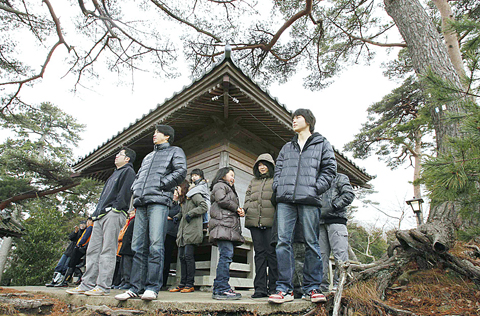
PHOTO: REUTERS
However, Japan later downgraded its alert and Russia cancelled its own warning after only minor waves reached the Kamchatka peninsula, while dauntless swimmers and surfers in Australia defied official warnings and flocked to the beach.
The Hawaii-based Pacific Tsunami Warning Center lifted its tsunami warning for the entire region. Thousands of people in 19 Philippine provinces who had voluntarily fled were free to return home, officials in Manila said.
Warning sirens had wailed as about 50 countries and territories along an arc stretching from New Zealand to Japan went on alert, five years after the Indian Ocean tsunami disaster that killed more than 220,000 people.
Waves pummeled Chile and rolled through into Hawaii, French Polynesia and the South Pacific as the tsunami moved at jet-speed across the giant ocean after Saturday’s 8.8-magnitude quake, which unofficial tallies say left at least 300 people dead.
Five people were killed on the remote Robinson Crusoe archipelago far off the coast of Chile, the first reported tsunami casualties, but elsewhere no significant damage was reported and surges of water were smaller than expected.
In Japan, one of the world’s most quake-prone nations, authorities were brooking no chances with the mass evacuation. But damage appeared limited, as sea gates in fishing ports slammed shut and boats steamed home.
The Hawaii center, set up by Pacific governments after the 1960 tsunami, had warned of possible “widespread damage” from waves as high as 3m.
In Hawaii itself, the tsunami led to the evacuation of thousands of people and triggered panic buying of food, water and fuel, but there was little damage.
In the island paradise of French Polynesia schools were closed, the port in Papeete was evacuated and thousands in Tahiti’s hillside areas were taken to safety as the tsunami hit.
Waves up to 1.5m high rammed New Zealand’s eastern Chatham Islands. In Australia, the size of the surge dropped to around 40cm although strong currents swelled up the east coast.
Lorentz Engdahl, a regular on Sydney’s Bondi Beach, was one of many to ignore the warnings and take a swim, as hundreds rushed to outlooks along the Australian coast to watch for outsized waves.
“The biggest danger right now are the blue bottles,” Engdahl said, referring to the stinging jellyfish that are a common nuisance on Australian beaches.
People in Tonga and the Cook Islands fled to higher ground, after a South Pacific tsunami killed more than 180 in September.
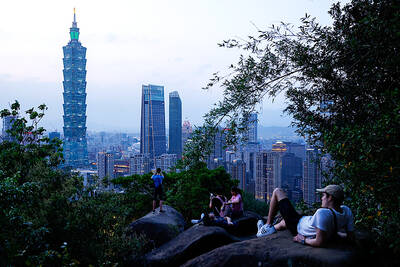
MORE VISITORS: The Tourism Administration said that it is seeing positive prospects in its efforts to expand the tourism market in North America and Europe Taiwan has been ranked as the cheapest place in the world to travel to this year, based on a list recommended by NerdWallet. The San Francisco-based personal finance company said that Taiwan topped the list of 16 nations it chose for budget travelers because US tourists do not need visas and travelers can easily have a good meal for less than US$10. A bus ride in Taipei costs just under US$0.50, while subway rides start at US$0.60, the firm said, adding that public transportation in Taiwan is easy to navigate. The firm also called Taiwan a “food lover’s paradise,” citing inexpensive breakfast stalls
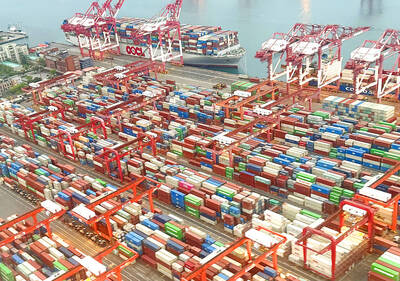
TRADE: A mandatory declaration of origin for manufactured goods bound for the US is to take effect on May 7 to block China from exploiting Taiwan’s trade channels All products manufactured in Taiwan and exported to the US must include a signed declaration of origin starting on May 7, the Bureau of Foreign Trade announced yesterday. US President Donald Trump on April 2 imposed a 32 percent tariff on imports from Taiwan, but one week later announced a 90-day pause on its implementation. However, a universal 10 percent tariff was immediately applied to most imports from around the world. On April 12, the Trump administration further exempted computers, smartphones and semiconductors from the new tariffs. In response, President William Lai’s (賴清德) administration has introduced a series of countermeasures to support affected
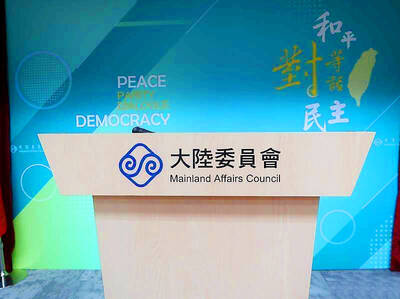
CROSS-STRAIT: The vast majority of Taiwanese support maintaining the ‘status quo,’ while concern is rising about Beijing’s influence operations More than eight out of 10 Taiwanese reject Beijing’s “one country, two systems” framework for cross-strait relations, according to a survey released by the Mainland Affairs Council (MAC) on Thursday. The MAC’s latest quarterly survey found that 84.4 percent of respondents opposed Beijing’s “one country, two systems” formula for handling cross-strait relations — a figure consistent with past polling. Over the past three years, opposition to the framework has remained high, ranging from a low of 83.6 percent in April 2023 to a peak of 89.6 percent in April last year. In the most recent poll, 82.5 percent also rejected China’s
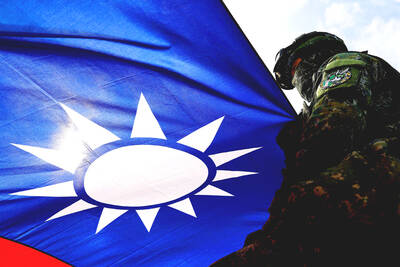
PLUGGING HOLES: The amendments would bring the legislation in line with systems found in other countries such as Japan and the US, Legislator Chen Kuan-ting said Democratic Progressive Party (DPP) Legislator Chen Kuan-ting (陳冠廷) has proposed amending national security legislation amid a spate of espionage cases. Potential gaps in security vetting procedures for personnel with access to sensitive information prompted him to propose the amendments, which would introduce changes to Article 14 of the Classified National Security Information Protection Act (國家機密保護法), Chen said yesterday. The proposal, which aims to enhance interagency vetting procedures and reduce the risk of classified information leaks, would establish a comprehensive security clearance system in Taiwan, he said. The amendment would require character and loyalty checks for civil servants and intelligence personnel prior to